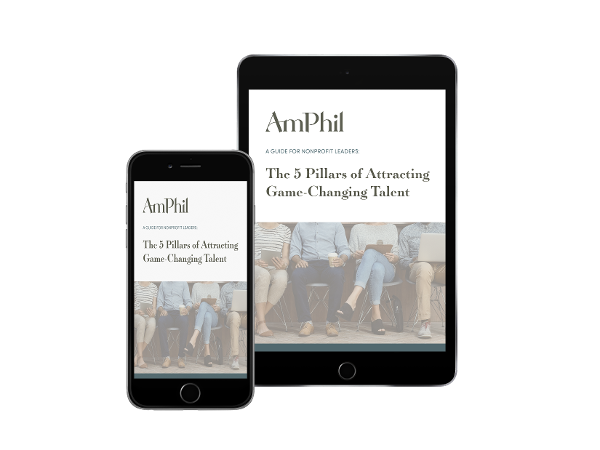
If you work for a foundation, you probably don’t get much negative feedback. As a neutral party, I’m here to tell you what your grantees won’t. They feel indebted to you and want to stay on your good side, so they usually aren’t going to tell you when they feel that you or your staff are being a pain in the neck. This presents a problem because, as a charitable foundation, you only fulfill your mission when your grantees are fulfilling theirs. Since your grantees won't tell you what you're doing wrong, I will outline the top poor decisions made by foundations:
1. Request hundreds of applications that can’t possibly be funded.
Some foundations have an open application process that allows any nonprofit (or any nonprofit in their grant areas) to apply. In theory, this allows an open process—any outstanding new grantee might apply out of the blue. But in practice, this usually means that nonprofits with no chance of receiving a grant waste countless hours filling out their application forms. It wastes their time, which would be better spent on fundraising strategies with a higher likelihood of success, and it wastes the time of foundation staff who feel obligated to read through the extraneous applications. Foundations with a letter of inquiry process, on the other hand, can have a somewhat open process without creating unnecessary and burdensome labor.
2. Set an arbitrary budget that excludes the best nonprofits.
Foundations often set guidelines with the best of intentions, such as limits on the percentage of a grant that can be spent on administrative costs or an expectation that a certain program strategy will pay off in the near term. While no one wants to fund an inefficient organization, foundations need to understand that running a nonprofit that can execute its programs well takes a lot of money spent on infrastructure—from fundraising to keeping the lights on in the office—that rarely add up to only 10 or 15% of the budget. If you aren’t willing to cover the real cost of executing the programs, your grant might end up having a negative impact on the organization’s budget, or you might scare away the nonprofits with higher overhead but also the best chance of success.
3. Make forms as complicated as possible.
In a misguided effort to be precise, many foundations require more forms, legal documents, and extra information than really needed. If you are giving grants in the $10,000 - $20,000 range, do you really need that 17th page where the applicant is forced to write 500 words about whether the project is “scalable on a global level”? Plus, have you ever had an applicant say “No, this isn’t scalable at all!”? Didn’t think so.
The real downside here is that any organization with a small budget or without full-time grant writers and fundraising infrastructure isn’t going to be able to complete your application, even if they are the best organization for fulfilling your philanthropic mission. If your mission is to feed the hungry in your city, have you considered the fact that the nuns down the street running a soup kitchen are probably accomplishing the most with the least overhead and that their lack of a pricey professional financial audit (which would cost 1/4 of their total annual budget) isn’t really a problem?
4. Change direction frequently.
“We’re going in a different direction” are some of the most dreaded words a nonprofit ever hears from a foundation. Of course, evaluating your foundation’s giving strategy and practices regularly is an important thing to do. But consideration should also be given to your grantee’s long-term strategies and needs—they, after all, are your boots on the ground, turning your resources into results. Funding the launch of a big ambitious project and then cutting funding the following year because you have new staff, board members, or a new strategic plan is a quick way to harm your grantee’s mission and make it harder to accomplish the foundation’s philanthropic ends in the long run.
Foundations best advice
Did you recognize your foundation in any of these descriptions? Not to worry. There’s always time to change, and it starts by having honest conversations—with past and current grantees, unsuccessful applicants, peer foundations, or third-party experts who can give you a clear, unbiased evaluation of your grant processes.
About the Author
 As a partner at AmPhil, Matt Gerken focuses on overall development strategy, audits and assessments, and fundraising services. He has a particular interest in donor advisory services, mid-level giving strategies, planned giving, and leveraging and interpreting data to maximize the efficiency and intelligence of his client’s operations.
As a partner at AmPhil, Matt Gerken focuses on overall development strategy, audits and assessments, and fundraising services. He has a particular interest in donor advisory services, mid-level giving strategies, planned giving, and leveraging and interpreting data to maximize the efficiency and intelligence of his client’s operations.
Matt began his career with Teach for America, teaching world history to sophomores in south Texas—still the hardest job he ever had. He also worked as a program director at the Intercollegiate Studies Institute. Matt studied intellectual history at Yale and resides in the Chicago area with his wife, three sons, and one daughter. He enjoys dodging angry Chicago drivers as he bikes to work, reading history and poetry, and amateur astronomy. Connect with Matt on LinkedIn here or contact him anytime at mgerken@amphil.com.


